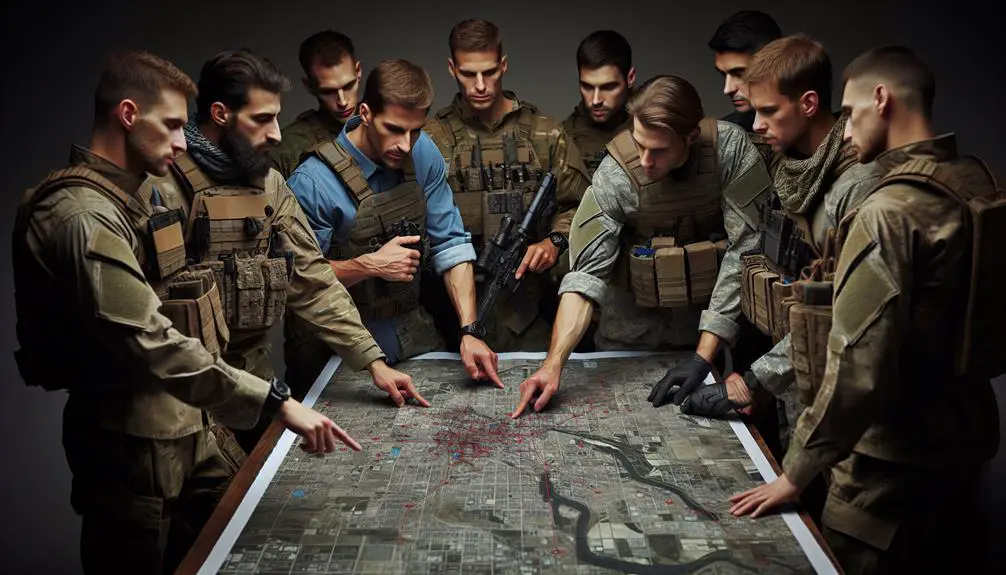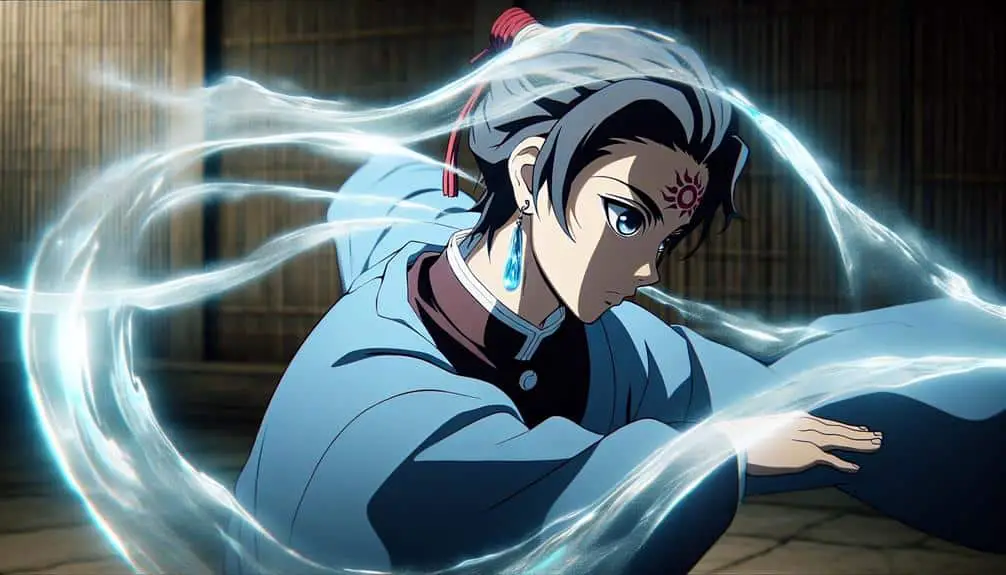To optimize Hashira success in mission battles, analyze strengths and weaknesses. Maximize efficiency by exploiting unique abilities. Deploy abilities strategically for synergy and advantage. Focus on team dynamics, leveraging strengths for peak performance. Enhance communication for seamless coordination and clarity. Analyze performance metrics to evaluate effectiveness. Each element contributes to mission success, ensuring a tactical advantage.
Key Points
- Identify individual strengths and weaknesses for strategic planning.
- Deploy abilities efficiently to maximize mission success rates.
- Leverage team dynamics and synergies for enhanced performance.
- Enhance communication for seamless coordination and tactical efficiency.
- Analyze performance metrics to evaluate and improve team effectiveness.
Identifying Hashira Strengths and Weaknesses
To optimize Hashira success in mission battles, it's essential to thoroughly analyze and understand their individual strengths and weaknesses. Maximizing efficiency and minimizing vulnerabilities are key factors in ensuring victory. Each Hashira possesses unique abilities that can be harnessed to gain an upper hand in battle. By identifying these strengths, you can strategize effectively, utilizing their skills to the fullest extent.
On the flip side, recognizing and addressing weaknesses is equally important. Whether it be a specific combat style they struggle against or a particular vulnerability, understanding these aspects is essential for creating a thorough battle plan. By shoring up these weaknesses through training or strategic partnerships with other Hashira, you can minimize potential risks during missions.
Strategic Deployment of Hashira Abilities
Efficiently deploying Hashira abilities strategically enhances mission success rates to a great extent. To maximize synergies within your team, it's vital to understand each Hashira's unique strengths and weaknesses. By exploiting vulnerabilities in the enemy's defenses, you can gain a significant advantage on the battlefield.
When strategically deploying Hashira abilities, consider the complementary nature of their powers. For example, pairing a Hashira with offensive abilities with one specializing in defense can create a balanced and formidable duo. This synergy allows you to cover a wider range of threats efficiently.
Furthermore, exploiting vulnerabilities in the enemy's strategy is key to gaining the upper hand in battle. Identify weak points in their formations or tactics and deploy Hashira abilities that can capitalize on these weaknesses. This targeted approach not only weakens the enemy but also strengthens your own position.
Leveraging Hashira Team Dynamics
Maximizing mission success hinges on the strategic utilization of Hashira team dynamics to capitalize on individual strengths and forge a cohesive unit. Achieving peak results requires a deep understanding of each Hashira's unique abilities and how they complement one another. Team synergy is paramount in battles, where the combined power of Hashira can overcome even the most formidable adversaries.
To leverage Hashira team dynamics effectively, focus on tactical maneuvers that exploit the strengths of each member. For instance, pairing a Hashira with offensive abilities alongside one specializing in defense can create a balanced frontline. Additionally, coordinating simultaneous attacks or defensive maneuvers can overwhelm opponents and provide strategic advantages.
Understanding the intricacies of each Hashira's fighting style and strategic preferences is essential for successful team dynamics. By recognizing individual strengths and weaknesses, you can assign roles that maximize effectiveness and minimize vulnerabilities. Emphasizing teamwork and communication is vital to guarantee seamless coordination during missions. Mastering Hashira team dynamics requires a meticulous approach, but the results are unparalleled in their effectiveness on the battlefield.
Enhancing Hashira Communication for Coordination
Enhancing Hashira communication is key to achieving seamless coordination and tactical efficiency in mission battles. Improved coordination among Hashira members is essential for success in complex missions. Effective communication guarantees that every team member understands their roles, objectives, and the overall strategy. To enhance communication, Hashira members should utilize clear and concise language, establish designated channels for information sharing, and actively listen to one another.
Implementing communication protocols, such as using specific codes or signals for different situations, can streamline decision-making processes during missions. Regular briefings and debriefings also play a crucial role in maintaining a cohesive team dynamic and crucial that everyone is on the same page. By fostering an environment where open communication is encouraged, Hashira members can share valuable insights, feedback, and suggestions that contribute to improved coordination and overall mission success.
Analyzing Hashira Performance Metrics
To evaluate Hashira performance effectively in mission battles, it's essential to analyze key performance metrics that reflect the team's effectiveness and impact on mission outcomes. Performance analysis is vital in understanding how well each Hashira contributes to the overall success of the mission. By examining metrics such as battle efficiency, strategic decision-making, and adaptability to different combat tactics, you can pinpoint areas for improvement and capitalize on strengths within the team.
Combat tactics play a significant role in determining Hashira performance. Analyzing how each Hashira executes their combat tactics, adapts to changing battlefield conditions, and collaborates with team members can provide valuable insights into their effectiveness in mission battles. By evaluating these performance metrics, you can identify opportunities to enhance coordination, optimize resource allocation, and ultimately achieve greater success in mission outcomes.




